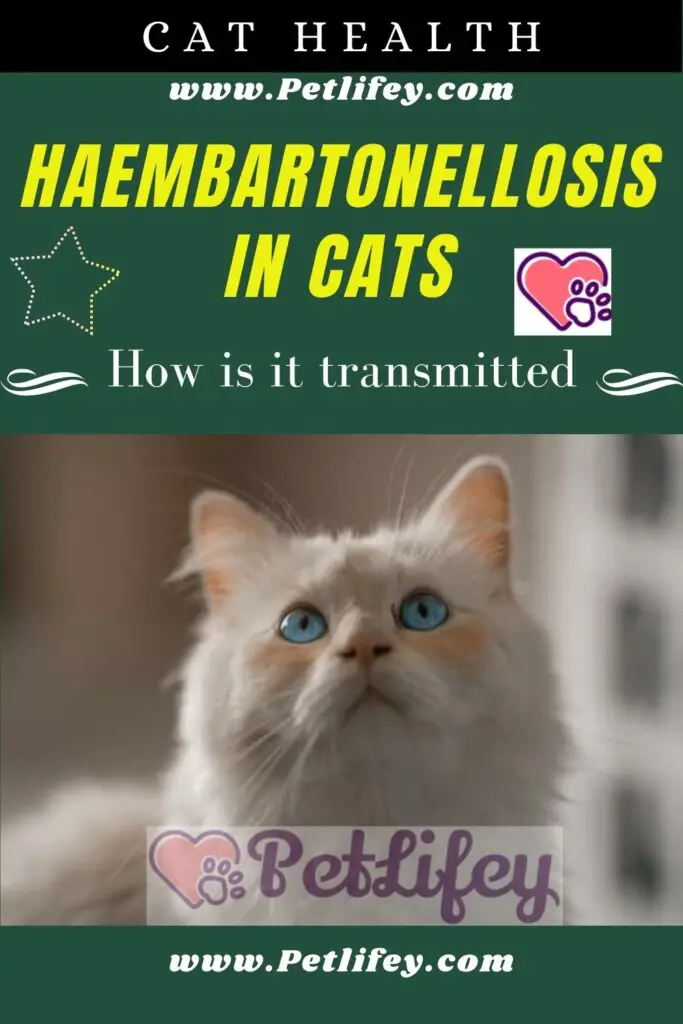
The word “anemia” is used to define a decrease in the number of red blood cells (erythrocytes) or in the reduced amount of hemoglobin present in the blood. Feline infectious anemia, also known as hemobartonellosis, is a disease caused by parasitic bacterial microorganisms that attach to the surface of red blood cells resulting in life-threatening haemolytic anemia. This microorganism infects cats through bacteria, bite wounds and blood transfusions. Cats can also transmit the bacteria to their pregnant kittens, for the virus is transplacental.
How is haemobartonellosis transmitted?

Animals that are affected by this pathology develop a progressive decrease in red blood cells, gradually getting worse. All this involves quite serious SYMPTOMS such as:
- weakness
- lack of appetite
- lethargy
- killing
- splenomegaly
- weight loss
- often fluctuating fever and sometimes sudden death.
The organisms promoting infectious anemia are Mycoplasma haemofelis and Mycoplasma haemominutum. Bacteria are transmitted from infected cats to healthy cats through well-known parasites such as fleas, ticks and possibly mosquitoes. The cats most affected are those who live outdoors and are used to fighting with other cats. Litters of infected cats also often turn out to be infected themselves. It is obvious that it is not yet clear whether vertical transmission occurs transplacental, transmammary (in milk) or due to exposure to blood during the birth process. Finally, cats can contract the disease through contaminated blood transfusions.
Whole young males (not spayed) also have a higher risk of contracting the infection. The same is true for cats that are immunocompromised or affected by the feline leukemia virus.
How does blood hemolysis happen?
The parasite once in contact with the blood and red blood cells parasites the surface membranes of the blood cells causing the onset of haemolysis and a potentially fatal haemolytic anemia through various mechanisms. When microorganisms attach themselves to the surface of the red blood cell, the cat’s immune system mistakenly treats these cells as foreign and initiates an immune response to destroy them. This is called immune-mediated hemolytic anemia. The liver, spleen, lungs and bone marrow also destroy infected red blood cells by a process known as erythrophagocytosis., which causes extravascular hemolysis. Finally, some cells of the immune system (called macrophages) are able to remove parasites from individual red blood cells and return damaged cells to the bloodstream. The animal will not lead a healthy and functional lifestyle.
10 days will be enough for the disease to develop. Subsequently, parasites arise in the blood that reproduce and have a duration of 1-2 days with an average of 6 days of life cycle. The level of parasites in the blood can vary greatly within a few hours. In extreme cases, feline infectious anemia can cause sudden death. Cats with chronic clinical disease have similar symptoms, but the disease persists over time accompanied by these symptoms:
- weight loss
- poor body condition
- enlarged spleen (splenomegaly)
- jaundice
- chronic fatigue
How is haemobartonellosis diagnosed
Taking a blood smear immediately following gross examination is diagnostic of feline infectious anemia. Perform the full blood test profile, which will show infectious anemia positive. To identify the particular causative organisms, the polymerase chain reaction (PCR) test was developed. The latter, however, may not be commercially or widely available.
The deadliest strain of this microorganism can be fatal in 30% of untreated cats, making timely treatment of paramount importance.
How haemobartonellosis is treated
In the presence of feline infectious anemia, therapeutic goals are resolution of clinical signs and restoration of red blood cell volume. In severe cases, transfusion, fluid therapy and the administration of antibiotics will be necessary. The current drugs of choice, designed to fight infectious bacteria, are doxycycline / tetracyclines. These drugs must be administered for at least 21 days. Antibiotic therapy does not permanently affect the disease. However, it can drastically reduce the amount of blood bacteria to the extent that it greatly helps the cat.
Since the infectious microorganisms stimulate the cat’s immune system to destroy red blood cells, we will administer immunosuppressive doses of glucocorticoids for a few days. Once infected, all cats become “carriers” for the rest of their lives and can become symptomatic during periods of excitement, stress or immunosuppression of any kind.






